The ulnar nerve runs from your neck, through your shoulder and elbow, and down into your hand. It’s responsible for sensation in your ring and pinky fingers and plays a key role in fine motor control.
When the nerve becomes compressed-especially around the elbow (in the cubital tunnel)-you may experience:
- Tingling or numbness in the ring and pinky fingers
- Weak grip strength
- Clumsiness when handling small objects
- Elbow pain that worsens when the arm is bent
This condition is called ulnar nerve entrapment, and it’s more common than you might think-especially in athletes, desk workers, and people with repetitive arm motions.
How Ulnar Nerve Therapy Helps
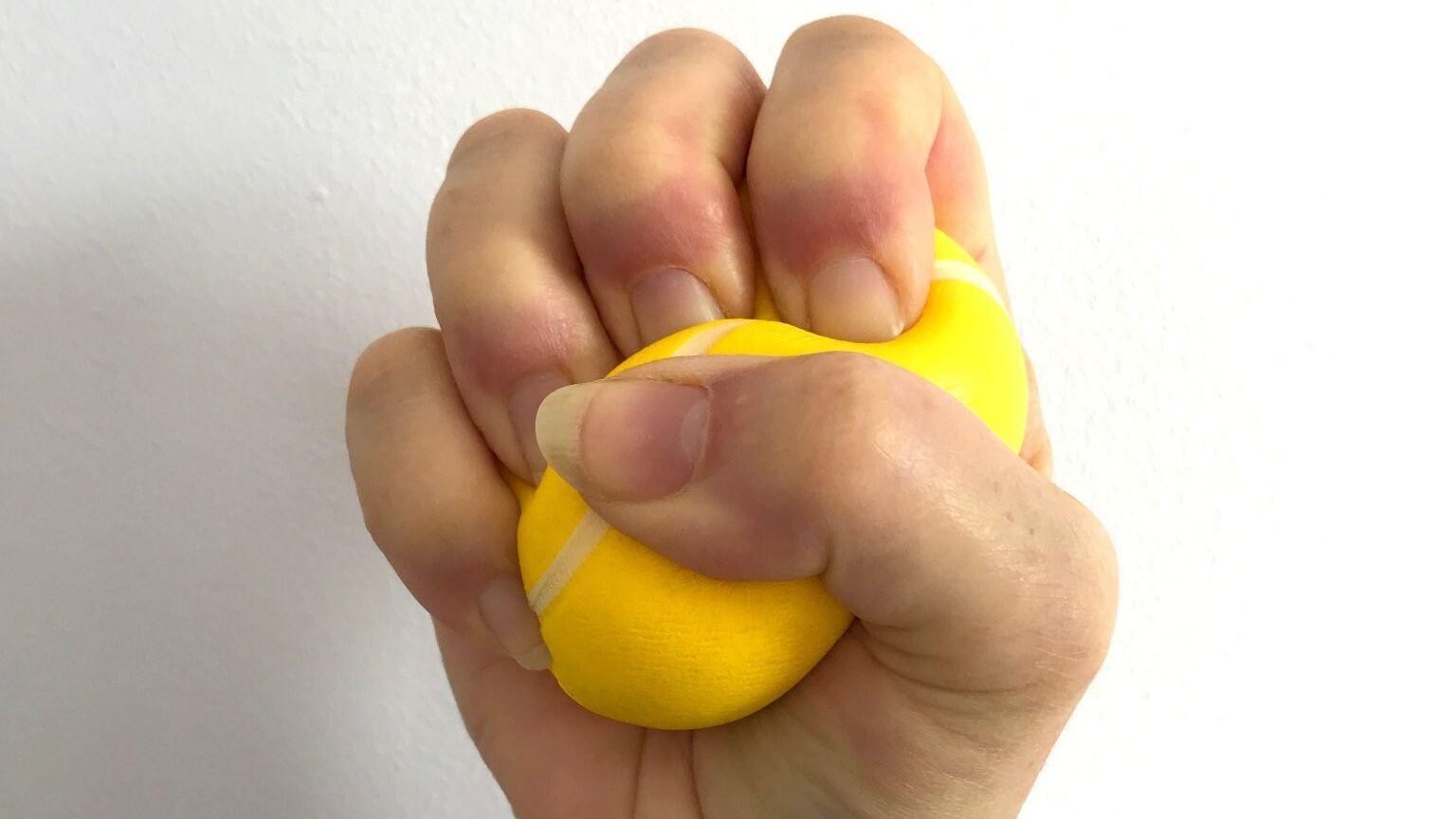
If you’re dealing with symptoms, don’t wait for them to go away on their own. At Triangle Physiotherapy, our team offers targeted, evidence-based ulnar nerve therapy to reduce pressure, improve mobility, and prevent long-term damage.
Here’s what your recovery journey might look like:
1. Assessment & Diagnosis
Your physiotherapist will evaluate your symptoms, movement patterns, posture, and arm function to pinpoint where the nerve is being compressed. This helps rule out other conditions like cervical spine issues or carpal tunnel syndrome.
2. Pain Relief & Protection
In the early stages, we focus on reducing inflammation and minimizing irritation:
- Activity modification (especially avoiding prolonged elbow flexion)
- Ergonomic advice for work and sleep positions
- Gentle modalities to calm irritated tissue
3. Ulnar Nerve Glides
One of the most powerful tools in your recovery toolbox? Ulnar nerve glides.
These are gentle, controlled movements that “floss” the nerve through its pathway-freeing it from areas of compression and restoring its mobility. You’ll learn how to perform them safely and effectively as part of your rehab program.
Bonus: These glides also improve circulation to the nerve, which can accelerate healing and reduce symptoms.
4. Strengthening & Mobility Work
As symptoms improve, your therapist will guide you through a tailored strengthening program to stabilize your shoulder, elbow, and wrist. This may include:
- Grip strengthening
- Postural retraining
- Core and scapular stabilization
- Stretching tight structures that may be contributing to compression
5. Return to Sport or Daily Activity
Whether you’re swinging a tennis racket, lifting weights, or typing for hours a day, we’ll help you safely return to your routine with confidence. We focus on:
- Rebuilding endurance
- Optimizing technique
- Preventing re-irritation
Where to Find Expert Ulnar Nerve Therapy in the GTA
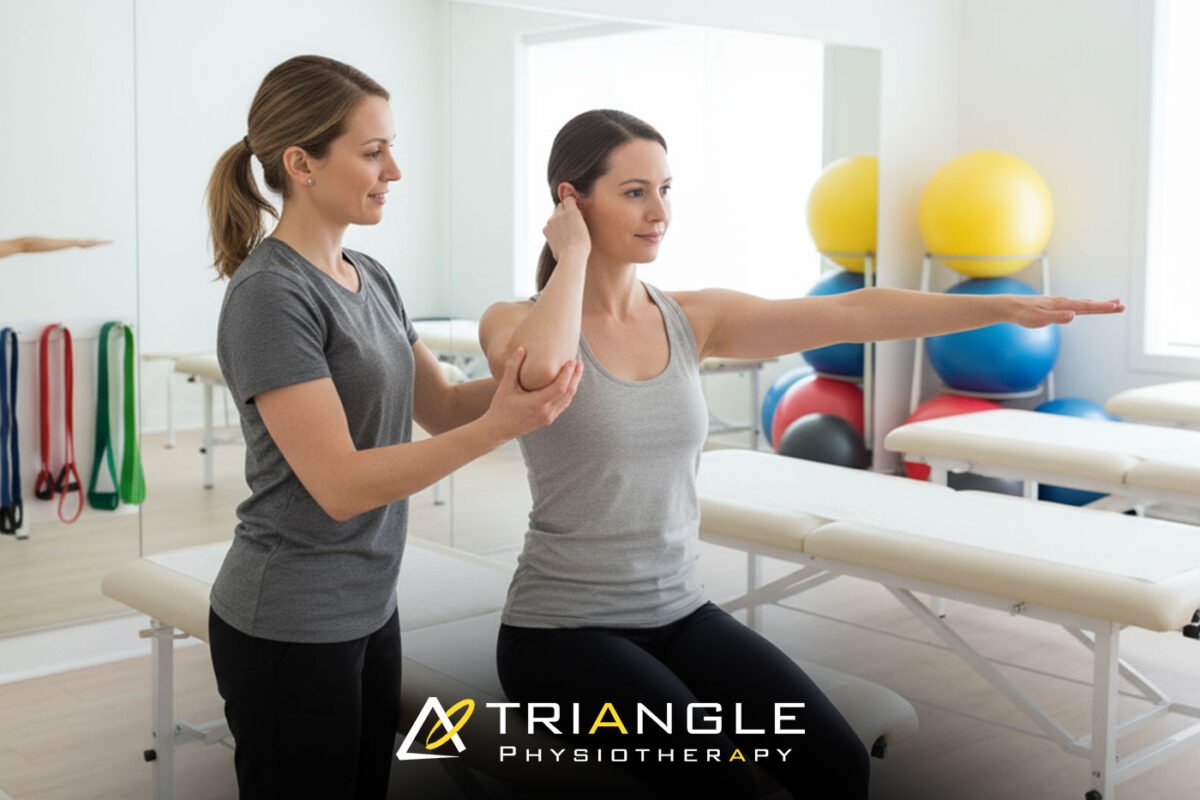
Looking for physiotherapy in North York, Oakville, or Etobicoke? Triangle Physiotherapy has you covered.
Our experienced team offers hands-on treatment and personalized care to address ulnar nerve entrapment and get you back to doing what you love-pain-free and stronger than before.
How to Prevent Ulnar Nerve Issues Long-Term
- Avoid prolonged elbow flexion (especially during sleep)
- Keep good posture during desk work
- Strengthen your upper body to support your arms
- Perform ulnar nerve glides as recommended
- Listen to early signs-don’t ignore the tingling!
Ready to Take the Pressure Off?
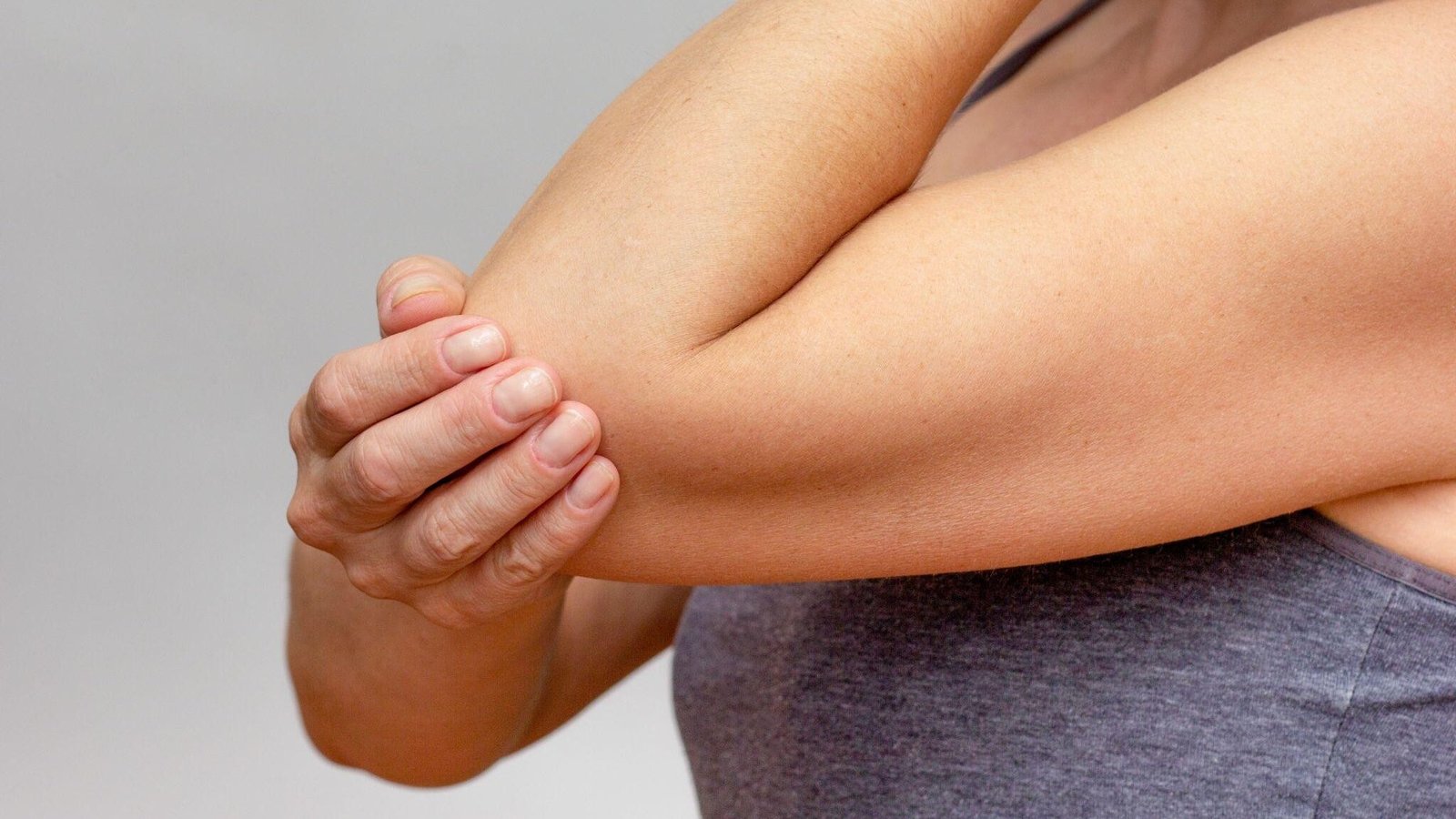
You don’t have to live with tingling hands, weak grip, or elbow pain. Whether you’re an athlete, a weekend warrior, or a dedicated desk worker, ulnar nerve therapy can make a life-changing difference.
Book your appointment today at Triangle Physiotherapy-serving patients across Etobicoke, North York, Oakville, and the Greater Toronto Area.
Let’s get your nerves firing on all cylinders again-no numbness, no limits.
Let’s face it – most of us spend hours a day at a desk, hunched over a keyboard, scrolling a mouse, or cradling a phone. While it might seem harmless, poor workstation habits can lead to a not-so-fun condition called ulnar nerve entrapment – especially if you’re constantly leaning on your elbows or keeping them bent for long periods.
That annoying tingling or numbness in your pinky and ring finger? It could be your ulnar nerve crying out for help. But the good news is, you can absolutely prevent it – and it starts with better ergonomics.
At Triangle Physiotherapy (with locations in Etobicoke, North York, Oakville and more), we often treat professionals dealing with ulnar nerve compression. Whether you’re working from home or in an office, these ergonomic tips can help you keep your nerves (literally) in check.
1. Mind Your Elbows
One of the biggest culprits in ulnar nerve entrapment is resting your elbows on hard surfaces. Doing this for hours can compress the nerve at the cubital tunnel (inside of your elbow).
Fix it:
- Use padded armrests or a soft desk cushion
- Keep your elbows slightly extended and relaxed at your sides – not jammed up on the desk
- Avoid sitting with your elbows bent past 90 degrees for long stretches
2. Adjust Your Desk & Chair Setup
Your workstation should work with your body, not against it.
Checklist:
- Chair height: Feet flat, hip and knees at 90°
- Keyboard position: Keep it close so your elbows aren’t overstretched or jammed in
- Mouse placement: Avoid reaching – keep it beside the keyboard
- Armrests: Support your forearms without pressing into your elbow
3. Switch Up Your Position Frequently
Static positions = tight muscles = unhappy nerves. Changing your posture helps keep everything moving – including your nerves.
Try this:
- Stand up every 30–60 minutes
- Alternate mouse hands occasionally
- Movement = prevention. It’s that simple
4. Incorporate Ulnar Nerve Glides into Your Day
Even with good ergonomics, nerves can get a little “stuck.” That’s where ulnar nerve glides come in. These gentle, controlled movements help the nerve move more freely through tight areas – kind of like flossing, but for your nerves.
Just a few reps a day can help prevent irritation and improve mobility. If you’re unsure how to do them, a session of ulnar nerve physiotherapy with our team can get you started safely.
5. Don’t Sleep on It – Literally
Many people sleep with their arm bent under their head or body, unknowingly compressing the ulnar nerve for hours.
Solution:
- Try sleeping with your arm straight by your side
- Use a pillow or brace to prevent excessive bending at night
When in Doubt, See a Pro

Even with the best desk setup, sometimes the pain, tingling, or numbness persists. That’s your sign to see a physiotherapist. At Triangle Physiotherapy, our experts in Etobicoke, North York, Oakville and more use hands-on treatment, nerve gliding techniques, and custom exercises to get your ulnar nerve back on track.
Struggling with ulnar nerve symptoms?
Don’t wait for it to get worse. Book a consultation with our team and get back to comfortable workdays.

If you’ve ever felt a weird tingling, numbness, or weakness in your ring and pinky fingers – especially after a long day at your desk – you might be dealing with something called ulnar nerve entrapment.
This happens when the ulnar nerve, which runs from your neck down to your hand, gets compressed – usually around the elbow (think: leaning on your desk too much) or wrist. Over time, this can lead to discomfort, weakness, or even coordination issues in your hand.
The good news? You don’t need a gym or fancy equipment to get relief. These ulnar nerve entrapment exercises are quick, easy, and can be done right from your desk chair. At Triangle Physiotherapy (with clinics in Mississauga, Etobicoke, and North York), we recommend these as part of early treatment and prevention strategies.
1. Ulnar Nerve Glide (“The Waiter Stretch”)
This is one of the most effective exercises for gently mobilizing the ulnar nerve. Think of it like flossing for your nerve – helping it move more freely through tight spots.
How to do it:
- Sit up straight in your chair
- Bring one arm out to the side, palm up, as if holding a tray
- Slowly bend your elbow and bring your hand toward your face
- Then reverse the motion, extending the arm again
- Repeat 10 times per side
Tip: You should feel a gentle stretch or tingling – not pain. If it’s too intense, shorten the range of motion.
2. Elbow & Wrist Stretch
If your job involves typing or using a mouse all day, this combo stretch hits two major tight areas – your inner elbow and forearm.
How to do it:
- Extend your arm out in front of you, palm facing up
- Use your other hand to gently pull your fingers back toward the floor
- You’ll feel the stretch in your forearm and possibly your elbow
- Hold for 15-20 seconds, then switch sides
- Repeat 3-4 times per arm
Bonus: This also helps with general wrist and forearm tightness caused by desk work.
3. Desk Shoulder Rolls & Posture Reset
This may seem too simple, but it’s surprisingly effective. Poor posture can cause or worsen ulnar nerve issues by increasing pressure through the neck and shoulder area.
How to do it:
- Sit tall, feet flat, shoulders relaxed
- Slowly roll your shoulders backward in a circular motion 10 times
- Then, pull your shoulder blades together (like you’re pinching a pencil between them)
- Hold for 5 seconds, release, and repeat 10 times
Why it works: Better posture opens up the space where nerves travel, reducing compression at the source.
When to Seek Help

If symptoms continue, like persistent tingling, numbness, or weakness, don’t wait. Professional physiotherapy for ulnar nerve compression can make a world of difference. At Triangle Physiotherapy, our team in Mississauga, Etobicoke, North York and more creates personalized treatment plans combining manual therapy, nerve gliding, strengthening, and posture correction.
Take 5 Minutes for Your Nerves Today.
Your body (and your fingers) will thank you.
Book your appointment with us today at trianglephysiotherapy.com
At Triangle Physiotherapy, we believe that knowledge is the first step toward recovery. One condition that we often see in our clinic is ulnar nerve entrapment. This condition, while common, is often misunderstood. In this blog, we’ll explain what ulnar nerve entrapment is, how it happens, and how physiotherapy can help.
What is Ulnar Nerve Entrapment?
The ulnar nerve is one of the main nerves in your arm, running from your neck down to your hand. It controls the muscles in your forearm and hand, including those responsible for fine motor skills. Ulnar nerve entrapment occurs when this nerve becomes compressed or irritated, typically at the elbow or wrist, leading to pain, numbness, or weakness in the hand and fingers.
This condition is sometimes referred to as “cubital tunnel syndrome” when it happens at the elbow, or “Guyon’s canal syndrome” when it occurs at the wrist. It’s important to address this problem promptly because if left untreated, it can lead to long-term nerve damage and functional impairment.
Causes of Ulnar Nerve Entrapment
Ulnar nerve entrapment can result from various factors, including:
- Repetitive motion: Activities that require repetitive arm movements, like typing, playing certain sports (e.g., tennis or golf), or assembly-line work, can put pressure on the ulnar nerve.
- Prolonged elbow flexion: When your elbow stays bent for long periods, such as when sleeping with your arm in a bent position, it can increase pressure on the ulnar nerve at the cubital tunnel.
- Direct trauma: A blow to the elbow or wrist can cause swelling or scar tissue that compresses the nerve.
- Anatomical issues: Some people are born with anatomical variations that make them more susceptible to ulnar nerve entrapment.
Symptoms of Ulnar Nerve Entrapment
The symptoms of ulnar nerve entrapment vary depending on the severity of the compression but commonly include:
- Numbness or tingling: You may feel a sensation of “pins and needles” in your ring and pinky fingers, especially when bending the elbow.
- Weakness: The muscles in your hand or forearm may feel weak, making it hard to grip or perform tasks that require fine motor skills, such as typing or buttoning a shirt.
- Pain: Sharp or aching pain may radiate from the elbow down to the hand, particularly when leaning on the elbow or holding the arm in a fixed position.
Treatment for Ulnar Nerve Entrapment
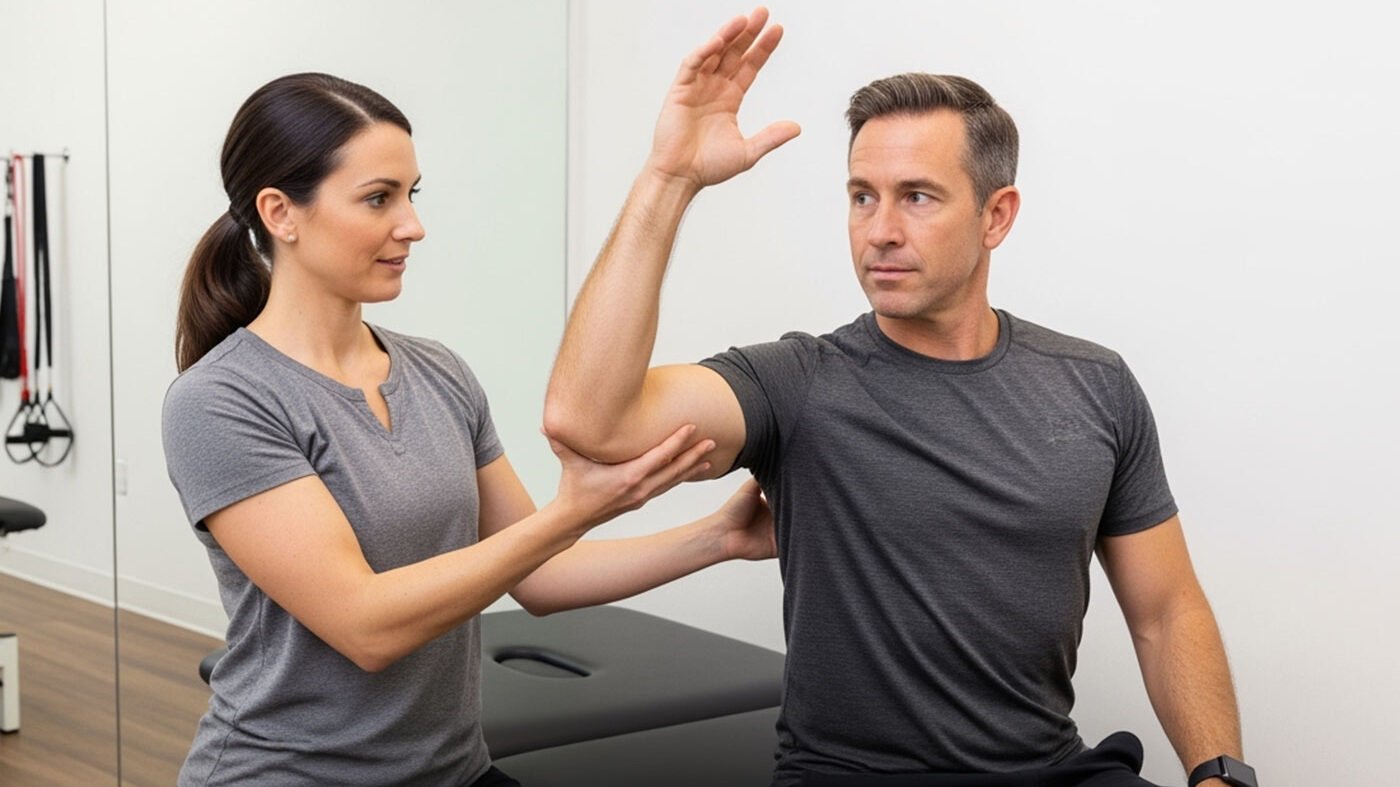
At Triangle Physiotherapy, our goal is to help you recover from ulnar nerve entrapment in a safe, effective, and non-invasive manner. Physiotherapy treatment often includes:
- Manual Therapy: Hands-on techniques to relieve tension, improve mobility, and reduce pressure on the ulnar nerve.
- Strengthening Exercises: A program designed to strengthen the muscles in the forearm and hand to help improve nerve function and prevent further injury.
- Stretching and Nerve Gliding Exercises: These exercises gently mobilize the ulnar nerve, helping to reduce tightness and improve circulation around the nerve.
- Ergonomic Advice: We provide recommendations on how to adjust your posture, workstation, or activity patterns to reduce stress on the elbow and wrist.
- IMS: Intramuscular stimulation not only helps you get rid of the symptomatic pain but also helps you trace the root cause of the problem. The results are golden.
In more severe cases, if conservative treatments like physiotherapy don’t bring relief, we may refer you to a specialist for further evaluation or suggest alternative treatments like injections or surgery.
Preventing Ulnar Nerve Entrapment
Prevention is always better than cure. Some simple tips to avoid ulnar nerve entrapment include:
- Taking breaks from repetitive activities
- Avoiding prolonged elbow flexion (e.g., don’t rest your elbow on hard surfaces for long periods)
- Using ergonomic supports like wrist splints during sleep. We help with custom braces especially for your measurements and it is also covered by your insurance.
Conclusion
If you’re experiencing symptoms like hand numbness, tingling, or weakness, ulnar nerve entrapment might be the culprit. The good news is that physiotherapy can be highly effective in alleviating symptoms and preventing future problems. At Triangle Physiotherapy, our team is here to provide personalized care and guide you through the healing process.
Don’t wait for the problem to worsen. Contact us today and take the first step toward a pain-free, more active life!
